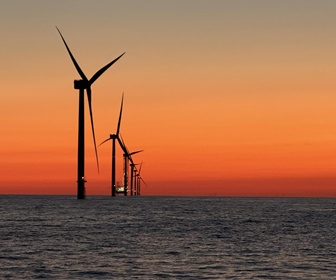Investments in clean energy must quadruple within the next two decades according to the Energy Transitions Commission (ETC). In its latest report "Financing the Transition: How to make the money flow for a net-zero economy" the ETC highlights the critical importance of strong government policies relating both to the real economy and to the financial system if finance is to flow on the scale required. It also identifies "concessional/grant" payments needed to support early coal phase-out, end deforestation and finance carbon removals.
Around $3.5 trillion a year of capital investment will be needed on average between now and 2050 to build a net-zero global economy, up from $1 trillion per annum today. Of this, 70% is required for low-carbon power generation, transmission, and distribution, which underpins decarbonisation in almost all sectors of the economy.
Well-designed real-economy policies must create strong incentives for private investment in the energy transition. Examples include setting ambitious targets for renewable generation by 2030, carbon prices and product regulation to drive decarbonisation in heavy industry, aviation and shipping, and specified date bans on the sales of internal combustion engines (e.g., by 2035 at the latest).
Other key actions include various forms of financial regulation, targeted fiscal support for the development and initial deployment of new technologies, and net-zero commitments from financial institutions.
Conceptually separate from investment finance (which will deliver positive economic returns), "concessionary/grant" finance will be required to help cover the economic costs of early coal phase-out, to offset the incentives to deforest, and to fund carbon dioxide removals.
There is enough capital globally to finance the energy transition. Although there are some short-term challenges to investment in the transition (e.g., high interest rates), renewables are cheaper than new fossil fuels in over 95% of global electricity markets and there is now an impetus to invest in energy security and efficiency savings.
The scale-up of investment required differs by country income group. In high-income economies and China, annual investments to build a net-zero economy will need to reach roughly double today's levels by 2030. In middle- and low-income countries, a four-fold increase is required by 2030.
In all countries, the vast majority of finance will come from private financial institutions and markets if well-designed real economy policies are in place. Yet even in high-income economies, public financial institutions should play a role in financing specific types of investment, such as first-of-a-kind technology deployments, shared infrastructure (e.g., hydrogen and CCUS transport and distribution networks), and residential buildings retrofits.
In some middle- and low-income countries, private financial flows alone cannot ensure adequate investment given the challenges created by high actual or perceived macroeconomic risks, inadequate domestic savings and other factors which increase the cost and reduce the supply of private finance. A significant increase in international financial flows to some lower-income economies is therefore required.








